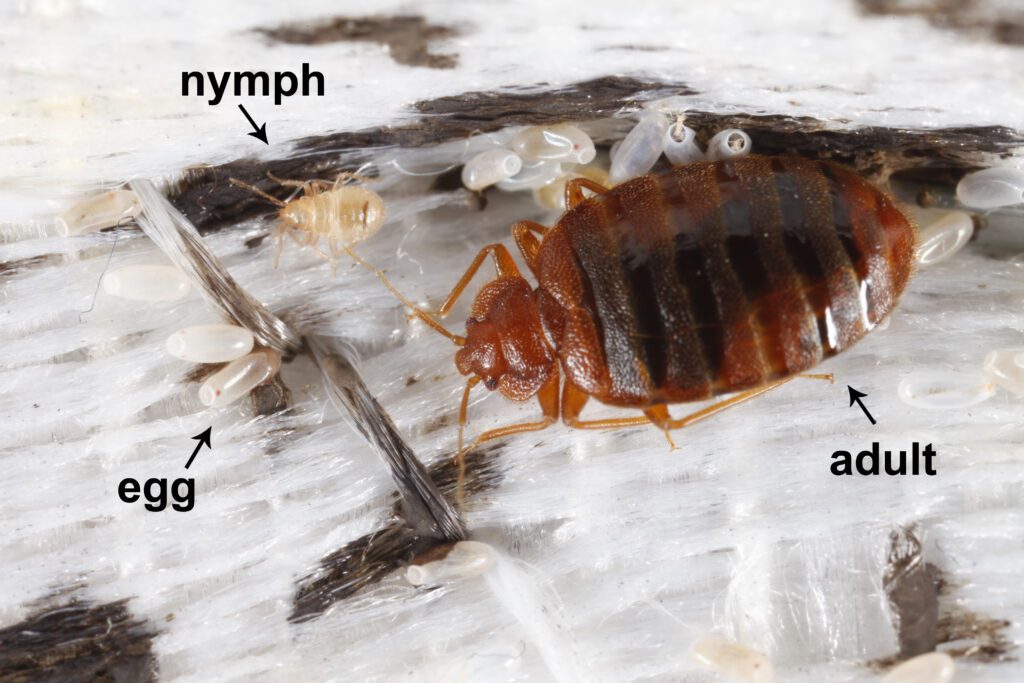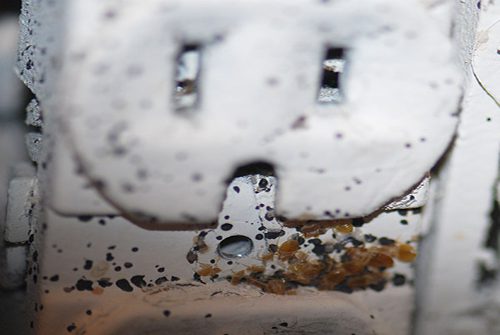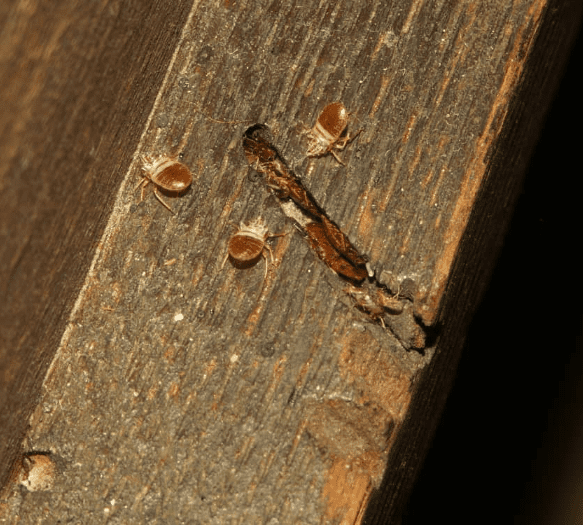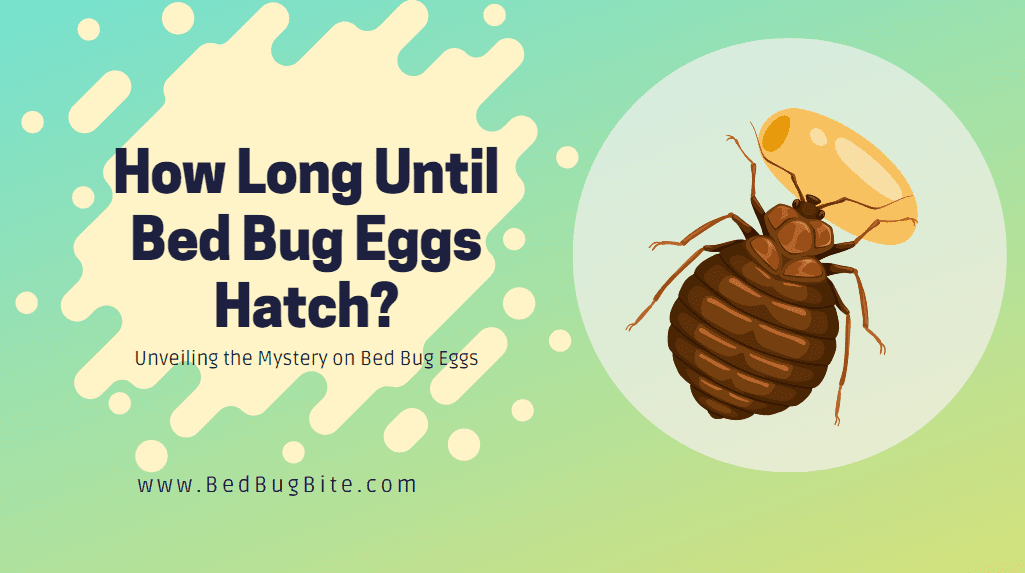Introduction: Understanding Bed Bug Infestations
Welcome to our comprehensive guide on understanding bed bug infestations. Specifically focusing on one of the most crucial aspects of their lifecycle: the hatching of bed bug eggs. Bed bugs have become a pervasive issue in homes across the globe. Making it essential for everyone to arm themselves with knowledge about these pesky invaders. The beginning of this battle against bed bugs lies in understanding their life cycle, particularly how long it takes for their eggs to hatch. This knowledge is not just academic; it forms the foundation of effective bed bug management and eradication strategies. … To Keep Reading about Bed Bugs, Click Now!
Bed bug infestations are more than just an annoyance; they are a significant concern for homeowners and renters alike. These tiny pests are experts at hiding, and their eggs are even more elusive. Identifying and targeting these eggs before they hatch can prevent the spread of infestations and save you from sleepless nights and potential health issues. Bed bugs are not known to transmit diseases, but their bites can cause itching and allergic reactions in some people. According to the Environmental Protection Agency (EPA), understanding the bed bug life cycle is a critical step in managing infestation issues effectively.
The Life Cycle of Bed Bugs

Diving deeper into the heart of bed bug management, understanding the life cycle of bed bugs is pivotal. This lifecycle is divided into three main stages: egg, nymph, and adult. Each phase plays a crucial role in the proliferation of bed bug populations, making it essential to target every stage for effective eradication.
The Egg Stage:
Bed bug eggs represent the genesis of an infestation. These eggs are incredibly tiny, about the size of a speck of dust, and pearl-white in color, making them difficult to spot without a keen eye. Female bed bugs lay their eggs in hidden crevices. Such as mattress seams, bed frames, and even behind wallpaper, preferring environments that are undisturbed and close to potential hosts. According to research, a single female bed bug can lay 200-250 eggs in her lifetime. With each egg taking about 6-10 days to hatch under optimal conditions.
[Centers for Disease Control and Prevention (CDC) Bed Bugs FAQ]
Factors Affecting the Incubation Period:
The time it takes for bed bug eggs to hatch is not set in stone. It varies depending on several environmental factors. Temperature plays a significant role. Eggs hatch quicker in warmer conditions, ideally between 70°F and 90°F. Humidity levels also influence the incubation period; moderate to high humidity is conducive to the hatching of bed bug eggs.
Understanding the egg stage and the factors affecting the incubation period is vital for homeowners and pest control professionals alike. It highlights the importance of creating unfavorable conditions for bed bugs and taking preventive measures early on. By addressing the issue at its root. Starting with the eggs – we can prevent the rapid spread of bed bugs and significantly reduce the risk of large-scale infestations. This approach is not just about dealing with the problem. It’s about outsmarting these resilient pests at every turn of their life cycle.
Timing is Key: How Long Do Bed Bug Eggs Take to Hatch?
Timing is crucial when dealing with bed bug infestations, especially regarding the hatching of bed bug eggs. These tiny pests follow a precise developmental timeline that, if understood and acted upon promptly, can significantly mitigate the extent of an infestation. Bed bug eggs typically take about 6 to 10 days to hatch under optimal conditions. This period is a critical window for homeowners and pest management professionals alike to identify and eliminate the eggs before they progress into the more mobile and harder-to-catch nymph stages.
Temperature and Environmental Conditions’ Impact on Hatching Time
The environment plays a pivotal role in the life cycle of bed bugs, particularly when it comes to the incubation period of their eggs. Warmer conditions tend to accelerate the hatching process. Bed bug eggs are most likely to hatch within the shorter end of the 6 to 10-day range at temperatures around 70 to 90 degrees Fahrenheit. Conversely, cooler temperatures can prolong the hatching period, giving you a slightly wider window to tackle the problem. It’s essential to understand that while temperature can affect hatching times, bed bug eggs are resilient and can survive a wide range of environmental conditions.
How Bed Bug Eggs’ Hatching Time Affects Infestation Spread
The speed at which bed bug eggs hatch has direct implications for the spread of an infestation. A single female bed bug can lay hundreds of eggs in her lifetime. If these eggs hatch quickly, the population can explode in a matter of weeks. This rapid population growth makes early detection and intervention crucial. Knowing the typical hatching time helps in scheduling inspections and treatments, making control efforts more effective. Identifying and targeting bed bug eggs through professional pest control methods or DIY solutions can significantly reduce the chances of a full-blown infestation.
Understanding the hatching time of bed bug eggs and the factors that influence it is fundamental in controlling and preventing infestations. By keeping a vigilant eye on the conditions that favor their development and acting swiftly upon detection, you can protect your home from the nuisance and potential health risks posed by bed bugs.
Spotting Bed Bug Eggs: Signs and Symptoms
Identifying bed bug eggs before they hatch is a critical step in managing and preventing bed bug infestations. Bed bug eggs are tiny, about the size of a pinhead, and are white or pearl-colored, making them difficult to spot against light-colored backgrounds. They are usually laid in clusters and found in hidden areas close to where humans sleep, such as mattress seams, bed frames, and behind furniture. Recognizing these signs early can be the key to stopping an infestation in its tracks.
How to Identify Bed Bug Eggs in Your Home
Bed bug eggs have a distinct appearance that, once familiar with, can be easier to identify. They are about 1mm in length and have a slightly elongated shape. Using a flashlight and a magnifying glass can help in spotting these tiny eggs in dark and tight spaces. Regular inspections of potential hiding spots are essential. Especially if your home has a history of bed bug problems or if you’ve recently stayed in accommodations where bed bugs might be present.
Common Locations for Bed Bug Eggs

Bed bugs prefer to lay their eggs in locations where they feel secure and close to a food source (i.e., humans). These locations often include the seams of mattresses, box springs, bed frames, and headboards. However, they can also be found in less obvious places like the crevices of furniture, between floorboards, behind wallpaper, and inside electrical outlets. Regularly checking these areas can help in detecting bed bug eggs early.
Differentiating Between Bed Bug Eggs and Other Pests
It’s important to differentiate bed bug eggs from those of other pests to apply the correct treatment strategy. Bed bug eggs are more elongated and smaller than those of common pests like fleas or ticks. Unlike some other insect eggs, bed bug eggs are laid in clusters and have a sticky surface, which helps them adhere to surfaces. If you’re unsure about the identification, consulting a pest management professional can provide clarity and ensure that the appropriate measures are taken.
Identifying bed bug eggs is a critical component of bed bug management and prevention. By knowing what to look for and where to look, you can take proactive steps in detecting and eliminating bed bug eggs before they hatch. Thereby reducing the likelihood of a growing infestation. Regular inspections and prompt action upon detection are key strategies in maintaining a bed bug-free home.
Preventing Bed Bug Egg Hatchings
Preventing the hatching of bed bug eggs is a cornerstone of effective bed bug management and infestation prevention. By targeting bed bugs at the egg stage, you can significantly reduce the potential for an infestation to take hold or spread. There are a variety of strategies that homeowners and pest control professionals can employ to prevent bed bug eggs from becoming a bigger problem. These strategies range from professional pest control interventions to DIY methods that can be implemented with diligence and regularity.
Strategies to Prevent Bed Bug Infestations from Escalating
Proactive monitoring and environmental management are key in preventing bed bug infestations from escalating. Encasements for mattresses and box springs can deter bed bugs from laying eggs on these surfaces and make them easier to inspect. Regular vacuuming can help remove bed bug eggs from carpets, upholstery, and other surfaces. However, it’s crucial to immediately dispose of the vacuum bag in a sealed container outside your home to prevent re-infestation.
Importance of Professional Pest Control for Egg Removal
While DIY methods can reduce the risk of bed bug infestations, professional pest control services are often necessary to completely eliminate bed bug eggs. Pest control professionals use a combination of heat treatments, insecticides, and mechanical methods tailored to the specific situation, ensuring that all stages of bed bugs, including eggs, are effectively targeted. Consulting with a professional can also provide valuable insights into prevention strategies tailored to your home environment.
DIY Methods: Heat Treatment, Vacuuming, and Chemical Treatments
DIY methods can complement professional pest control efforts or serve as an initial response to bed bug eggs. Heat treatments, such as washing bedding and clothing at high temperatures, can kill bed bug eggs. Vacuuming, as mentioned earlier, can physically remove eggs from surfaces. Certain chemical treatments available to consumers can also be effective. But it’s important to use these products cautiously and according to manufacturer instructions to avoid harm to health or the environment. Always prioritize safety and efficacy by choosing EPA-registered bed bug products.
Preventing bed bug eggs from hatching is an essential step in combating bed bug infestations. By employing a combination of preventive strategies, professional pest control services, and effective DIY methods, you can protect your home from the threat of bed bugs. Regular inspections, cleanliness, and prompt action at the first sign of bed bug eggs can make a significant difference in managing these persistent pests.
After the Hatch: Dealing with Nymphs and Adults
After the hatch: dealing with nymphs and adults becomes the next critical phase in managing a bed bug infestation effectively. Once bed bug eggs hatch, the emerging nymphs begin their quest for blood meals, gradually maturing into reproducing adults. This phase of the bed bug lifecycle presents new challenges and requires swift, comprehensive strategies to prevent further proliferation of the infestation. Understanding the behaviors of nymphs and adults, alongside implementing effective elimination methods, is key to regaining control over your living spaces.
What to Do Once Bed Bug Eggs Have Hatched

Immediate action is necessary once bed bug eggs have hatched. Begin by thoroughly inspecting bedding, furniture, and potential hiding spots for signs of nymphs. Which are smaller and lighter in color than adults. Isolation and treatment of infested areas are paramount. Using bed bug-proof mattress and pillow encasements can trap nymphs and adults. Cutting off their access to food sources and leading to their eventual demise.
Effective Methods for Eliminating Nymphs and Adults
A multi-faceted approach is most effective for eliminating bed bug nymphs and adults. This includes physical methods like vacuuming combined with chemical treatments using EPA-approved insecticides. Heat treatment is particularly effective, as bed bugs at all life stages cannot survive temperatures above 120°F (49°C). Steam cleaning can penetrate mattresses and upholstery, killing bed bugs hidden deep within. For severe infestations, professional extermination services offer comprehensive solutions, employing a mix of strategies tailored to the specific situation.
Long-Term Prevention Strategies to Keep Bed Bugs Away
Preventing re-infestation requires diligence and ongoing preventive measures. Regular inspections of sleeping areas and luggage after travel can catch infestations early. Maintaining cleanliness reduces hiding spots for bed bugs, while decluttering minimizes the areas where they can establish new colonies. Consider applying natural deterrents like diatomaceous earth in areas prone to bed bugs. Engaging professional pest control for periodic inspections can also provide peace of mind and early detection of potential re-infestations.
Addressing the challenge of nymphs and adult bed bugs following the hatching of eggs is essential in the battle against bed bug infestations. Through immediate action, employing a combination of effective elimination methods. And implementing long-term prevention strategies, you can protect your home and family from the discomfort and stress bed bugs cause. The key is to stay vigilant, informed, and ready to act at the first sign of bed bug activity to maintain a bed bug-free environment.
FAQs: Everything You Need to Know About Bed Bug Eggs
Navigating the complexities of bed bug infestations often leads to numerous questions, especially concerning bed bug eggs. Our FAQ section aims to address the most common inquiries, providing you with detailed, evidence-based answers. Understanding these aspects is crucial for effective bed bug management and ensuring peace of mind. Here, we tackle some of the most pressing questions related to bed bug eggs. Drawing from authoritative sources and expert knowledge.
How Many Eggs Do Bed Bugs Lay at a Time?
A single female bed bug can lay between one to five eggs each day and may lay up to 500 eggs in her lifetime. This prolific reproduction rate underscores the importance of early detection and intervention. The eggs are laid in secluded spots, making them challenging to find and highlighting the need for thorough inspections and treatments to manage infestations effectively.
Can Bed Bug Eggs Hatch After Treatment?
Some bed bug eggs might survive initial treatment, especially if chemical treatments do not penetrate their protective shell. This resilience makes follow-up treatments crucial. Techniques like heat treatment can be more effective in ensuring that all life stages, including eggs, are eradicated. Monitoring after treatment is essential to confirm that all bed bug eggs have been destroyed and to prevent a resurgence of the infestation.
How to Ensure All Bed Bug Eggs Are Destroyed?
Ensuring the complete destruction of bed bug eggs requires a combination of methods and persistence. Professional exterminators often use a mix of heat treatment, chemical treatments, and physical removal methods to address all life stages of bed bugs. Regular follow-up inspections and treatments are necessary to catch any eggs that might have been missed initially or newly laid eggs. Utilizing mattress encasements and maintaining a vigilant cleaning schedule can also help prevent new eggs from becoming a problem.
Our FAQ section is designed to address your most pressing concerns about bed bug eggs. Offering insights and practical advice for tackling this challenging phase of a bed bug infestation. By understanding these key points, you’re better equipped to implement effective control measures, ensuring a bed bug-free environment. Remember, staying informed and proactive is your best defense against bed bugs and their eggs.
Conclusion
In conclusion, understanding the lifecycle of bed bugs, especially the timing and treatment of their eggs, is paramount in winning the battle against these persistent pests. From the initial identification of bed bug eggs to implementing strategies for their elimination and preventing future infestations. The knowledge shared here equips you with the tools needed to protect your home and family. It’s a comprehensive approach, combining timely actions, effective treatments, and preventive measures, that forms the cornerstone of successful bed bug management.
Stay Vigilant and Proactive
The key to maintaining a bed bug-free environment is constant vigilance and proactive measures. Regular inspections, prompt treatments, and adopting preventive practices can significantly reduce the likelihood of an infestation or re-infestation. Engage with professional pest control services when necessary to ensure that treatments are thorough and effective.
Seeking Professional Help
For severe infestations or when DIY methods fail to yield results, seeking professional help is advisable. Pest control professionals have access to tools and techniques that may not be readily available to homeowners. They can provide targeted treatments to eliminate bed bugs at all life stages, including hard-to-kill eggs.
Additional Resources
For further reading and resources on managing bed bug infestations, the Environmental Protection Agency (EPA) offers comprehensive guides and tips on bed bug prevention and treatment. Additionally, the Centers for Disease Control and Prevention (CDC) provides health-related information on bed bugs. Helping you understand the potential health impacts and how to address them.
Through this guide, we’ve explored the crucial aspects of dealing with bed bug eggs. An essential step in the broader context of bed bug eradication. By staying informed, vigilant, and proactive, you can create a safe and comfortable living environment, free from the nuisance of bed bugs. Remember, the fight against bed bugs is ongoing. But with the right knowledge and tools at your disposal, it’s a battle that can be won.




